In Bologna, astronomy was taught since the late 13th century. However, it was Luigi Ferdinando Marsili (1658-1730) who founded the first private astronomical observatory in his own house, and then, in 1726, an institute to host his instruments, a library, and an astronomical tower. Despite the fact that several times the Roman Church condemned the practice of astrology, the Bolognese studio kept commissioning astrological prognostications to the professors of astronomy and mathematics up until 1799: their were asked to predict not only natural phenomena, but also the most important events involving the city and its most illustrious families. A new scientific genre developed, practiced by some of the most important professors at the Bolognese studio, beginning with Domenico da Novara (1454-1504), Copernicus’ teacher. Girolamo Cardano (1501-1576), Luca Gaurico’s (1476-1558) pupil, particularly valued astrology, and specifically he attached much importance to dreams as tools to interpret the events of his onw life, to the point that he commissioned to his friend Leone Leoni a commemorative medal showing one of his own premonitory dreams. The most famous professor of astronomy of the 16th century was Giovanni Antonio Magini (1555-1617), who also cast doubt of the new discoveries by Galilei in 1610. On the other hand, Giovanni Domenico Cassini (1625-1712), who began to practice astronomy after his teacher the Genoese mathematician Giambattista Baliani (1582-1666), directly opposed astrology, and the same did Geminiano Montanari (1633-1687), his friend and pupil, professor of mathematics and follower of the Galileian school. Indeed, in 1685 Montanari published in Venice L’astrologia convinta di falso col mezzo di nuove esperienze e ragioni fisico-astronomiche, deeply criticizing academic astrology.
